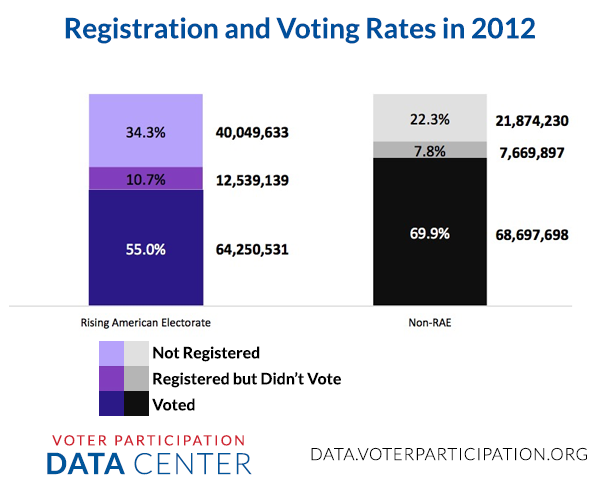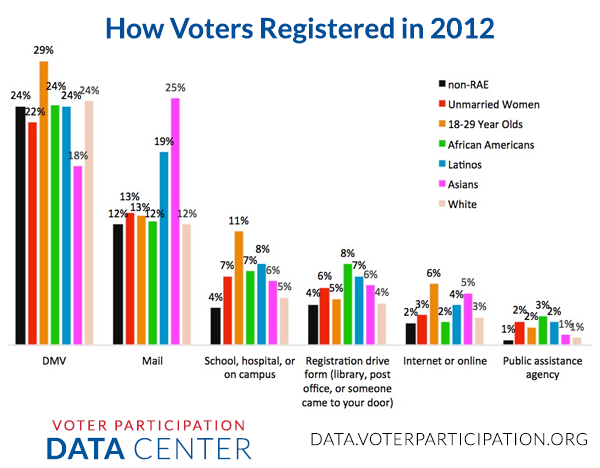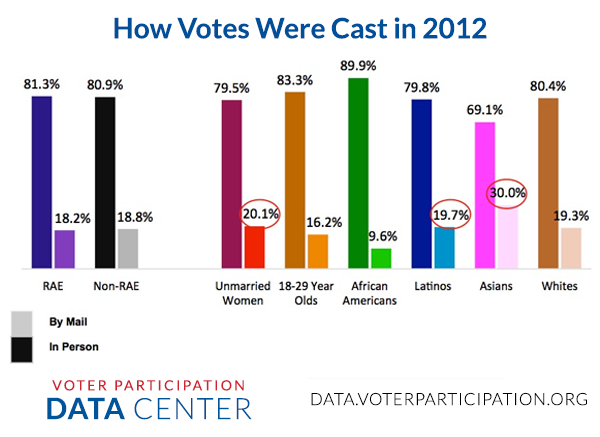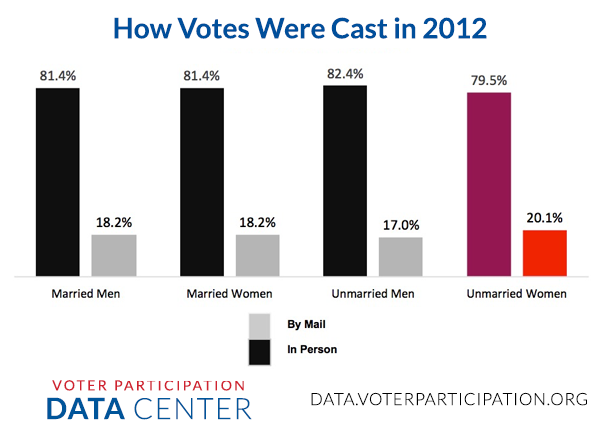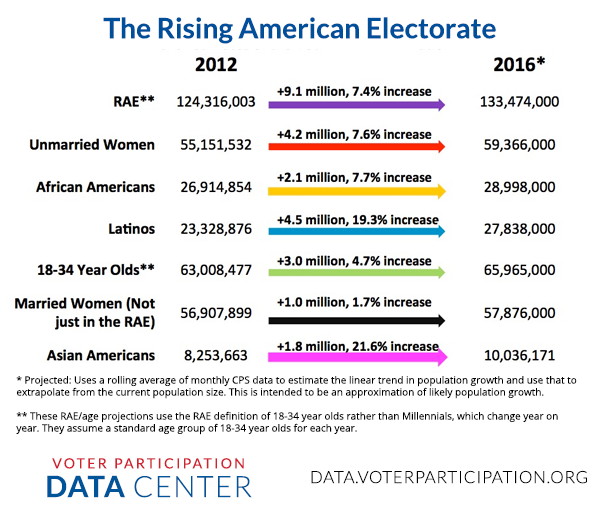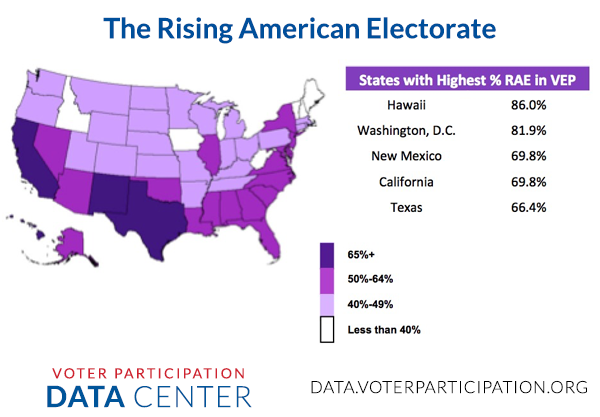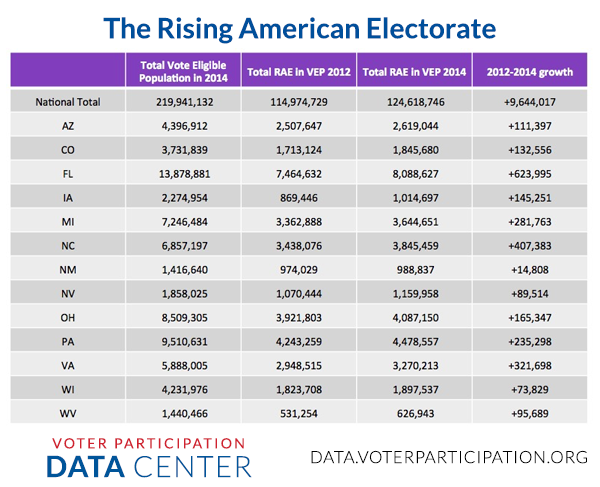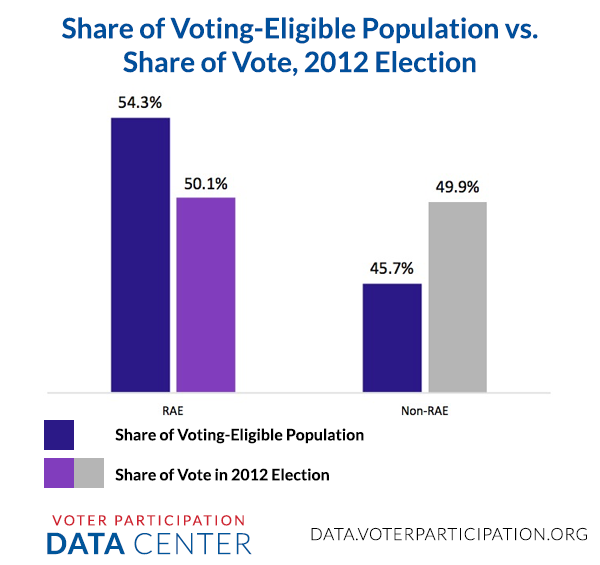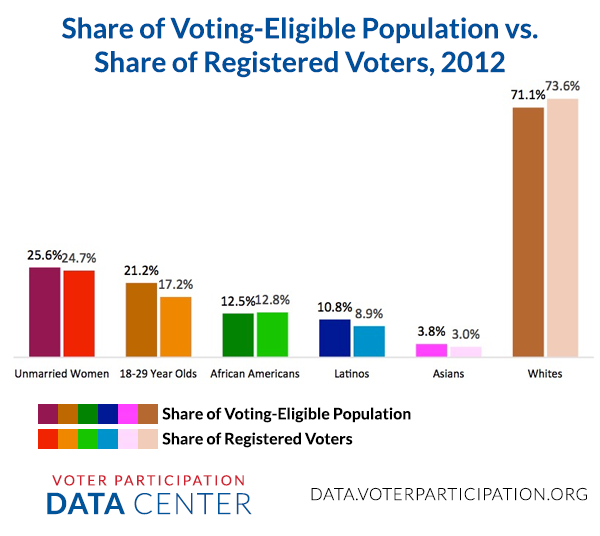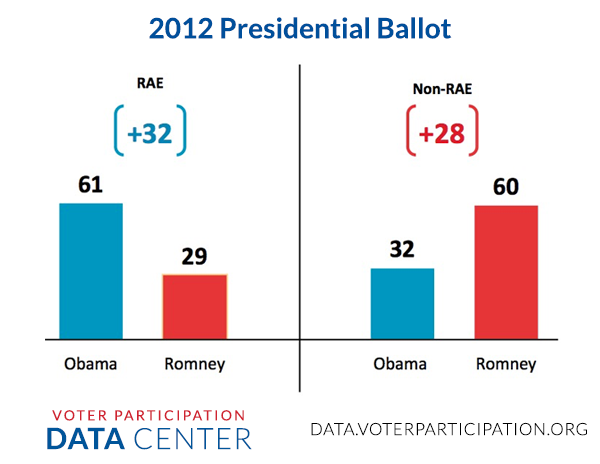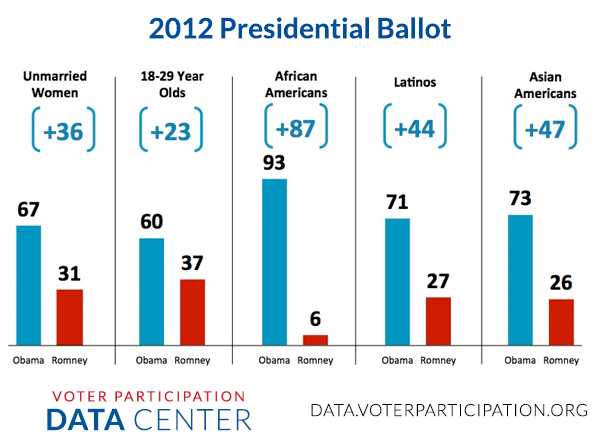How the Rising American Electorate Register and Vote
About a third of the Rising American Electorate (RAE) – unmarried women, people of color, young voters 18-35 (Millennials) — are not registered to vote.
Convenience of registration matters: The RAE is most likely to register at the DMV or by mail.
The majority of the RAE votes in person.
Unmarried women, one of the largest groups within the RAE – are the most likely to vote by mail.
An in-depth demographic, economic and political look at unmarried women and the Rising American Electorate from Lake Research Partners.
- Unmarried Women: A Demographic and Economic Profile
- Unmarried Women: An Electoral Profile
- The Rising American Electorate: A Profile
- How the Rising American Electorate Register and Vote
- The Rising American Electorate: A Population on the Move
The Rising American Electorate: A Profile
The fast-growing Rising American Electorate (RAE) – unmarried women, people of color and young people 18-35 (Millennials) — now account for more than half (56.7 percent) of all eligible voters in the United States.
All of the groups that make up the RAE are growing rapidly and by 2016, they will likely cast over half of all ballots, making them the majority of the electorate.
The RAE population is growing all across America.
While RAE turnout has increased in recent elections, they still do not vote in proportion to their share of the population.
There is a gap in almost all RAE groups between the number of RAE members who could vote and those who do.
About a third of the RAE is not registered to vote.
Latinos and young people are the least likely to be registered.
RAE turnout in 2012 was 55 percent, compared to an almost 70 percent (69.9 percent) turnout by the rest of the electorate. RAE members who voted in 2012 helped reelect President Obama.
All the groups that make up the RAE overwhelmingly supported President Obama.
An in-depth demographic, economic and political look at unmarried women and the Rising American Electorate from Lake Research Partners.
Unmarried Women: A Demographic and Economic Profile
An in-depth demographic, economic and political look at unmarried women and the Rising American Electorate from Lake Research Partners.
- Unmarried Women: A Demographic and Economic Profile
- Unmarried Women: An Electoral Profile
- The Rising American Electorate: A Profile
- How the Rising American Electorate Register and Vote
- The Rising American Electorate: A Population` on the Move
Unmarried women – women who are widowed, divorced, separated or have never been married – make up one of the fastest-growing shares of the U.S. population and electorate. As their numbers grow so does their power to decide elections, speed social change, and shape the nation’s policy agenda.
Right now, the data shows they are living very different lives than their married counterparts – they earn less, have less education, are more likely to be unemployed, in poverty, without health care coverage or a pension plan.
All data is from 2014, unless otherwise noted and has been pulled from research done by both Lake Research Partners and Bill Johnstone.
Population & Demographics
There are 56.8 million unmarried women in the U.S. They account for 26 percent of the overall population.
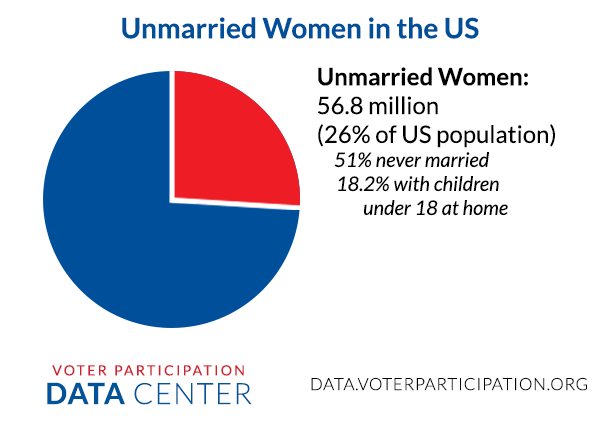
Unmarried women are on a trajectory to equal or surpass the number of married women by the November, 2016 presidential election.

Unmarried women skew young and old:

More than six in ten unmarried women in America are white.
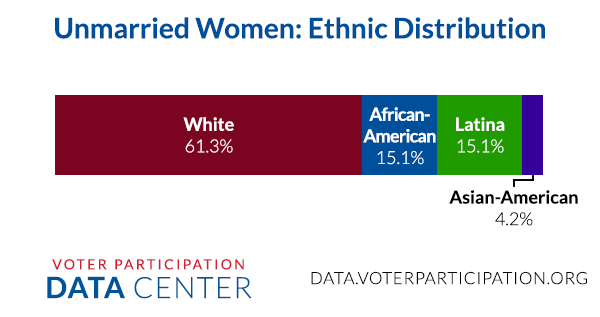
Education & Economics
A significantly higher percentage of married women (37.5 percent) have college and higher degrees than unmarried women (24.1 percent).
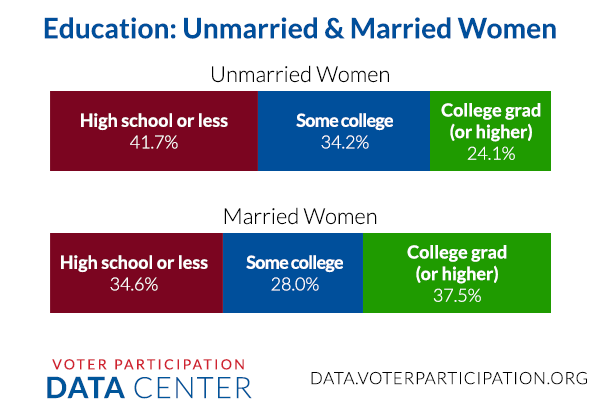
An unmarried woman was more than twice as likely to be unemployed (7.3 percent) as a married woman (3.1%).
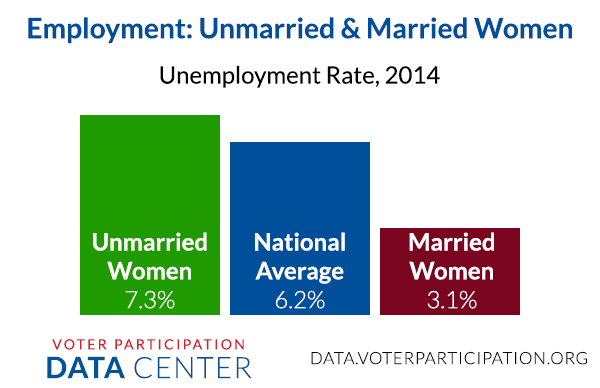
15.4 percent of unmarried women did not have health coverage in 2013—almost twice the rate for married women (8.3 percent).
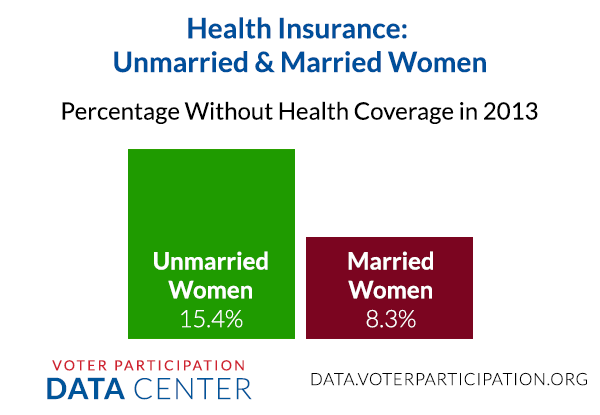
Unmarried women are disproportionately at the lower end of income brackets.
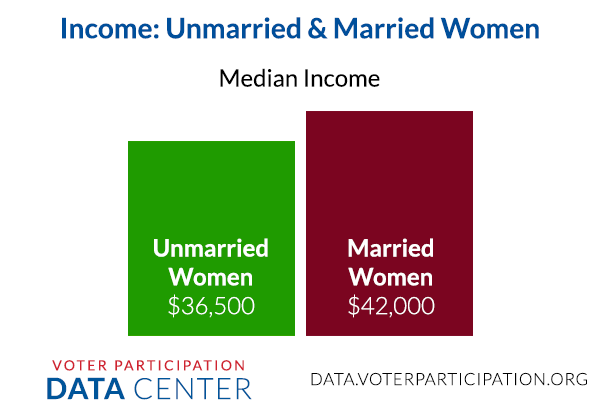
Women working full time make 80 cents for every dollar a man working full time makes. Unmarried women make substantially less. Latinas make the least of all unmarried women.
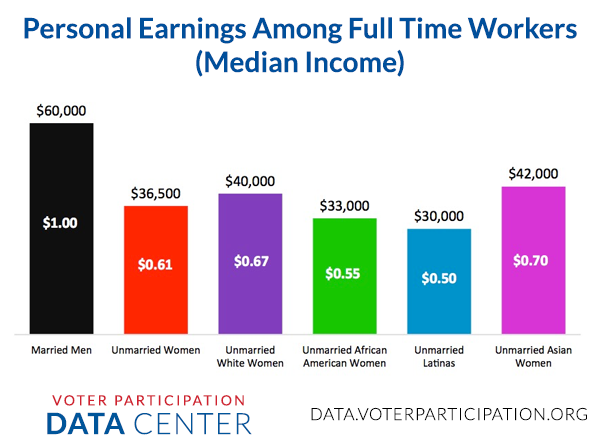
Unmarried mothers make significantly less than their married counterparts.

Unmarried women are almost four times as likely to live in poverty as married women.

Unmarried women are less likely to be homeowners.
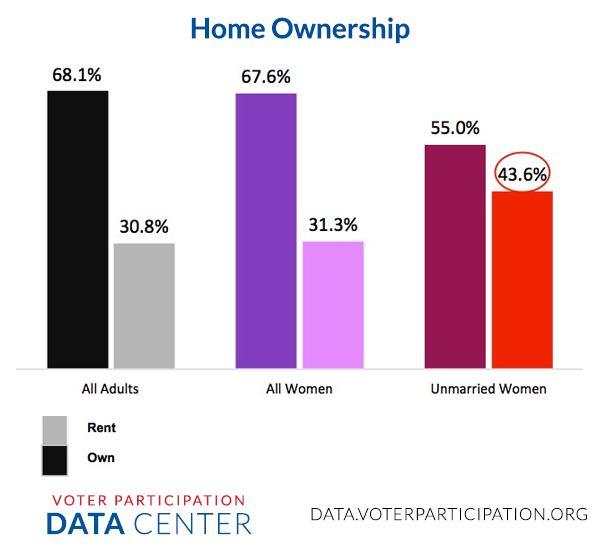
Over half of unmarried women do not have a employer-provided pension plan.
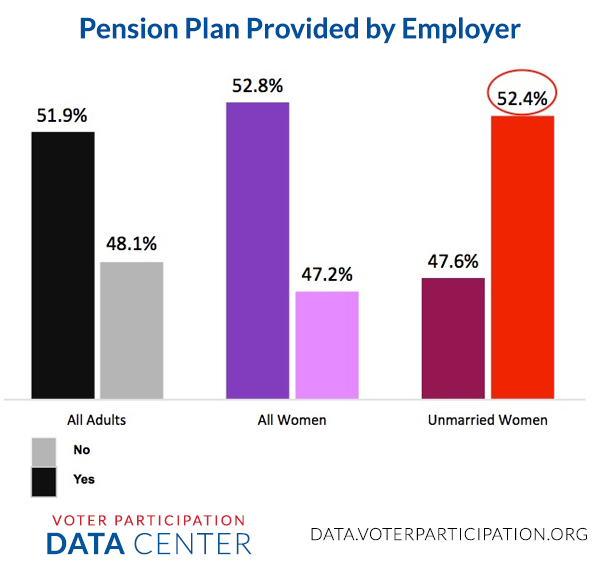
An in-depth demographic, economic and political look at unmarried women and the Rising American Electorate from Lake Research Partners.
- Unmarried Women: A Demographic and Economic Profile
- Unmarried Women: An Electoral Profile
- The Rising American Electorate: A Profile
- How the Rising American Electorate Register and Vote
- The Rising American Electorate: A Population` on the Move
The Ultimate Research Guide to Unmarried Women and the 2014 Elections
The Voter Participation Center and Lake Research Partners today are releasing the Ultimate Research Guide to Unmarried Women and the 2014 Elections. An invaluable resource for political observers, activists and the media, the Guide contains detailed information on unmarried women and other members of the Rising American Electorate, key voting blocs that will determine election outcomes in 2014, 2016 and beyond.
The Ultimate Research Guide analyzes data from the Census Bureau’s Current Population Survey (CPS), and details the growing political power of unmarried women voters. The report finds:
- Unmarried women are among the fastest growing demographic groups, with the largest growth since 2000 in sheer numbers: 10.4 million new eligible voters as November 2012, a 23.2% increase.
- Over 55 million unmarried women are eligible to vote, comprising 25.6% of the voting eligible population.
- In the 2012 presidential election, unmarried women were underrepresented, comprising only 24.0% of voters.
- Married women are more likely to register and vote than unmarried women. However, unmarried women are narrowing the gap, registering to vote and voting in increasing numbers.
The Voter Participation Center coined the term Rising American Electorate (RAE) to describe the voting group that includes unmarried women, people of color and young people aged 18-29. RAE voters helped re-elect President Obama in 2012. And the Republicans in their post-election “autopsy” vowed to broaden their base and appeal to these voters, “especially in Hispanic, African American and Asian Pacific communities.” Our research shows that unmarried women (divorced, separated, widowed, never married) are the largest segment of the RAE voting bloc. They are registering and voting at unprecedented levels and their civic engagement is critical to any candidate’s success.
Downloads
Anticipating 2014 Voter Drop-Off
This report, compiled by the Voter Participation Center and Lake Research Partners, highlights the potential drop-off in voter turnout looking ahead to the 2014 election, particularly that of the Rising American Electorate (unmarried women, people of color, and young people).
Downloads
2013 Summit Presentations
Presentations from Matt Barreto of Latino Decisions and Cate Gormley of Lake Research Partners at the 2013 VPC Summit on May 1, 2013.
Downloads
The Gender and Marriage Gap in Earnings
Unmarried women face constant challenges; their disproportionately small paychecks give rise to other issues that impact their everyday lives. With the economy continuing to be at the forefront of voters’ minds, those concerned with helping the most economically-distressed Americans would be well advised to listen to unmarried women and understand how correcting this disparity can have real impacts in all areas of their lives.
Downloads
Unmarried Women Deeply Opposed to the Sequester
Unmarried women are deeply opposed to the sharp cuts in the sequester and to a crisis approach to fiscal governance, according to a new study by pollster Stan Greenberg and the Women’s Voices Women Vote Action Fund (WVWVAF). Based on research conducted during the President’s State of the Union Address, swing voters and unmarried women strongly oppose cuts that would take money away from education, Medicare and job training programs.


